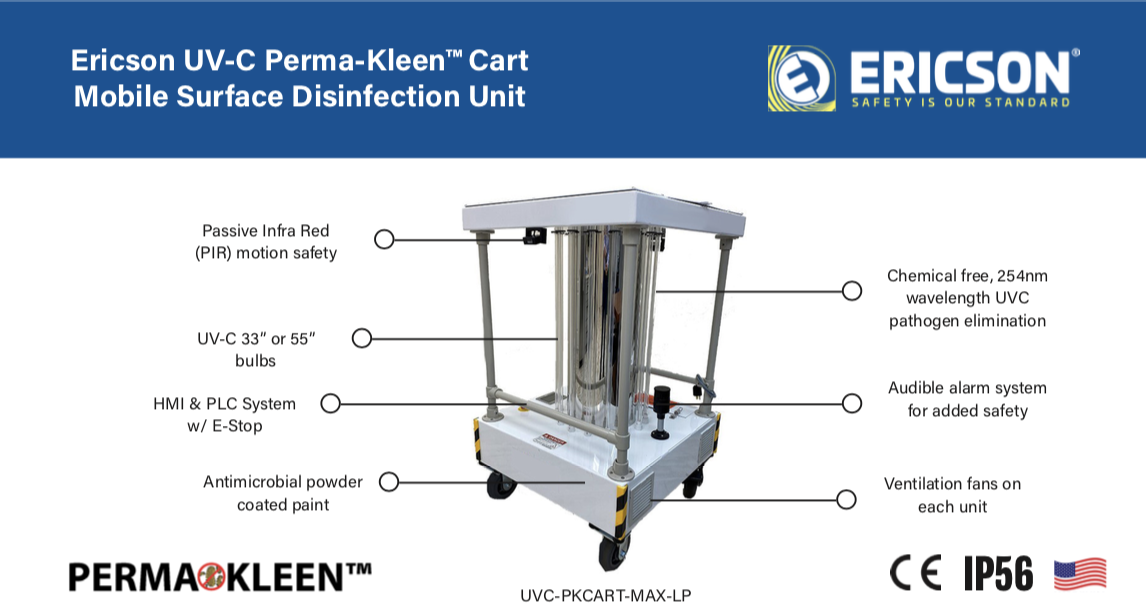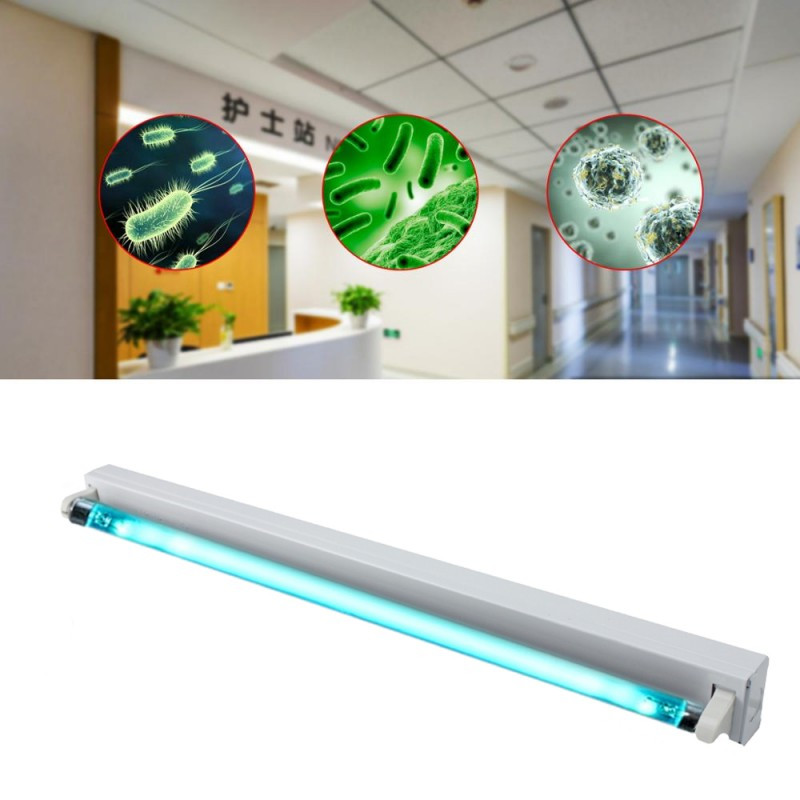UV Surface Disinfection Techniques: Maximizing Performance for Germ-Free Spaces
Wiki Article
Taking Advantage Of the Potential of UV Sanitation: Safeguarding Health and Health
As the world comes to grips with the ongoing pandemic and the consistent danger of infectious conditions, the significance of keeping health and wellness and health has actually never ever been extra obvious. In this context, utilizing the potential of UV disinfection emerges as an encouraging option. UV disinfection, a modern technology extensively used in numerous markets, has actually shown reliable in eliminating harmful microorganisms. There is a lot more to explore behind the scientific research of UV sanitation and its applications. From comprehending the systems at play to applying this technology in our everyday lives, this conversation intends to shed light on the capacity of UV sanitation and its duty in protecting our health and wellness and health.Comprehending UV Sanitation
UV sanitation is a very effective and widely used method for making sure and eliminating damaging virus health and wellness and hygiene. This technique makes use of ultraviolet (UV) light to suspend microbes by damaging their DNA and avoiding them from duplicating. UV disinfection is particularly effective against bacteria, infections, and various other bacteria that can trigger infections and conditions.The concept behind UV disinfection is easy yet powerful. When UV light is given off at a particular wavelength, it penetrates the microorganism's cell wall and disrupts its hereditary material. This process, referred to as photodissociation, causes the formation of thymine dimers, which prevent the microbe from reproducing and providing it safe. UV disinfection can be used in different settings, consisting of water treatment plants, medical care facilities, food handling markets, and air purification systems.
Among the benefits of UV sanitation is its ability to effectively and successfully get rid of a wide variety of microorganisms without the need for chemicals or ingredients. Unlike various other disinfection techniques, such as chlorine or ozone, UV disinfection does not introduce hazardous byproducts or chemical residues right into the setting. In addition, UV disinfection is a non-contact procedure, which means that it does not need physical contact with the microbes, decreasing the danger of cross-contamination.

The Science Behind UV Sanitation
The effectiveness of UV sanitation exists in its capability to disrupt the hereditary product of microorganisms, making them not able to reproduce and thereby eliminating their unsafe potential. UV, or ultraviolet, radiation is a type of electro-magnetic radiation with wavelengths much shorter than visible light. It is categorized right into 3 kinds: UV-A, UV-B, and UV-C. UV-C radiation, particularly, has the quickest wavelength and the highest energy. This high-energy UV-C radiation is most efficient in sanitation applications due to the fact that it can pass through the cell wall surfaces of microorganisms and damage their DNA or RNA.When microbes are revealed to UV-C radiation, the power is taken in by their hereditary product, triggering bonds to damage and creating chain reactions that interrupt their ability to reproduce. This stops the microorganisms from duplicating and spreading out infection. UV disinfection is particularly efficient against fungis, bacteria, and viruses, consisting of typical pathogens such as Escherichia coli, Salmonella, and Influenza.
The scientific research behind UV sanitation is supported by comprehensive research study and research studies. It has been revealed that direct exposure to an enough dosage of UV-C radiation can attain a high degree of disinfection, commonly surpassing 99.9% efficacy in eliminating bacteria. It is crucial to note that the efficiency of UV sanitation depends on various factors, consisting of the intensity of UV-C radiation, exposure time, distance from the UV resource, and the vulnerability of the microbe to UV radiation (uv surface disinfection).
Applications of UV Sanitation
Provided the substantial research study and efficacy of UV sanitation in interfering with the genetic material of bacteria, it is very important to explore the numerous sensible applications of this modern technology. UV disinfection has actually proven to be a useful device in a wide variety of markets where preserving a tidy and secure environment is necessary.One significant application of UV disinfection is in health care setups. UV light can be made use of to sanitize surfaces, tools, and even the air in hospitals and clinical facilities. This helps to decrease the risk of healthcare-associated infections and makes sure a more secure environment for individuals and healthcare employees.
An additional important application is in the food and drink sector. UV sanitation is utilized to treat water and eliminate hazardous microorganisms, such as E. coli and Salmonella, from the manufacturing process. uv surface disinfection. This makes certain the security and high quality of the items we consume
UV disinfection is also widely utilized in water therapy plants and wastewater therapy facilities. It is an effective approach for ruining dangerous bacteria, infections, and bloodsuckers that can be existing in water resources. This assists to offer safe and tidy alcohol consumption water to areas and protect the atmosphere from contamination.
In addition, UV disinfection is utilized in the pharmaceutical sector to decontaminate equipment and maintain the honesty of items. It is additionally utilized in laboratories and research facilities to stop contamination and guarantee exact outcomes.
Advantages of UV Disinfection Modern Technology
One notable benefit of utilizing UV sanitation modern technology is its capacity to effectively get rid of bacteria without the usage of extreme why not check here chemicals. This is particularly beneficial in different setups, such as health care centers, water therapy plants, and food processing sectors, where the presence of damaging microorganisms presents a significant threat to public health and wellness and safety and security.
Unlike typical disinfection approaches that depend on chemicals like chlorine or ozone, UV sanitation technology utilizes ultraviolet light to target and ruin the DNA of microorganisms, properly counteracting their capability to recreate and cause infections. This process not just gets rid of the need for possibly unsafe chemicals yet additionally minimizes the threat of chemical residue or results staying in the cured environment.

Additionally, UV sanitation innovation is eco-friendly. As it does not count on the usage of chemicals, it removes the requirement for their transport, disposal, and production, reducing the general carbon impact connected with disinfection procedures. Furthermore, UV disinfection systems have a longer lifespan compared to chemical-based techniques, resulting in less frequent substitute and more decreasing waste.
Applying UV Disinfection in Every Day Life
To properly implement UV sanitation in day-to-day live, organizations and people can integrate portable UV sterilizing tools into their hygiene routines and cleaning practices. These devices are created to give off ultraviolet light, which has actually been proven to eliminate or inactivate a wide variety of bacteria, consisting of bacteria, infections, and fungi. By making use of mobile UV sterilizing devices, people can sanitize frequently touched items and surfaces, such as cell phones, secrets, doorknobs, and laptops, decreasing the threat of spreading out germs and infections.In addition to integrating portable UV disinfecting tools, it is essential to comply with correct standards and recommendations for efficient UV sanitation. This consists of guaranteeing that the gadget is made use of correctly and for the recommended period to accomplish ideal disinfection outcomes. It is also important to prioritize safety and security procedures, such as using safety eyeglasses and avoiding direct exposure of the UV light to the skin.

Additionally, companies can implement UV sanitation innovation in numerous setups to boost hygiene practices. For circumstances, health centers and medical care centers can make use of UV disinfection robotics to disinfect individual rooms, running theaters, and other high-touch areas. Food handling sectors can integrate UV disinfection systems into their manufacturing lines to enhance food safety and protect against my review here contamination.
Verdict
In verdict, useful link UV disinfection innovation holds terrific potential in securing wellness and hygiene. With its countless benefits, UV sanitation is a beneficial tool for maintaining a clean and healthy setting.Unlike various other disinfection techniques, such as chlorine or ozone, UV disinfection does not introduce dangerous byproducts or chemical deposits right into the atmosphere. It is crucial to keep in mind that the performance of UV disinfection depends on different elements, including the intensity of UV-C radiation, exposure time, distance from the UV source, and the susceptibility of the microorganism to UV radiation.
Another benefit of UV disinfection modern technology is its ability to supply fast and continuous disinfection. Unlike manual cleaning methods, which can be time-consuming and call for significant labor, UV disinfection systems can be automated and operate continuously, ensuring regular sanitation without human treatment.To successfully implement UV disinfection in day-to-day life, companies and individuals can integrate portable UV sterilizing gadgets into their health regimens and cleaning up methods.
Report this wiki page